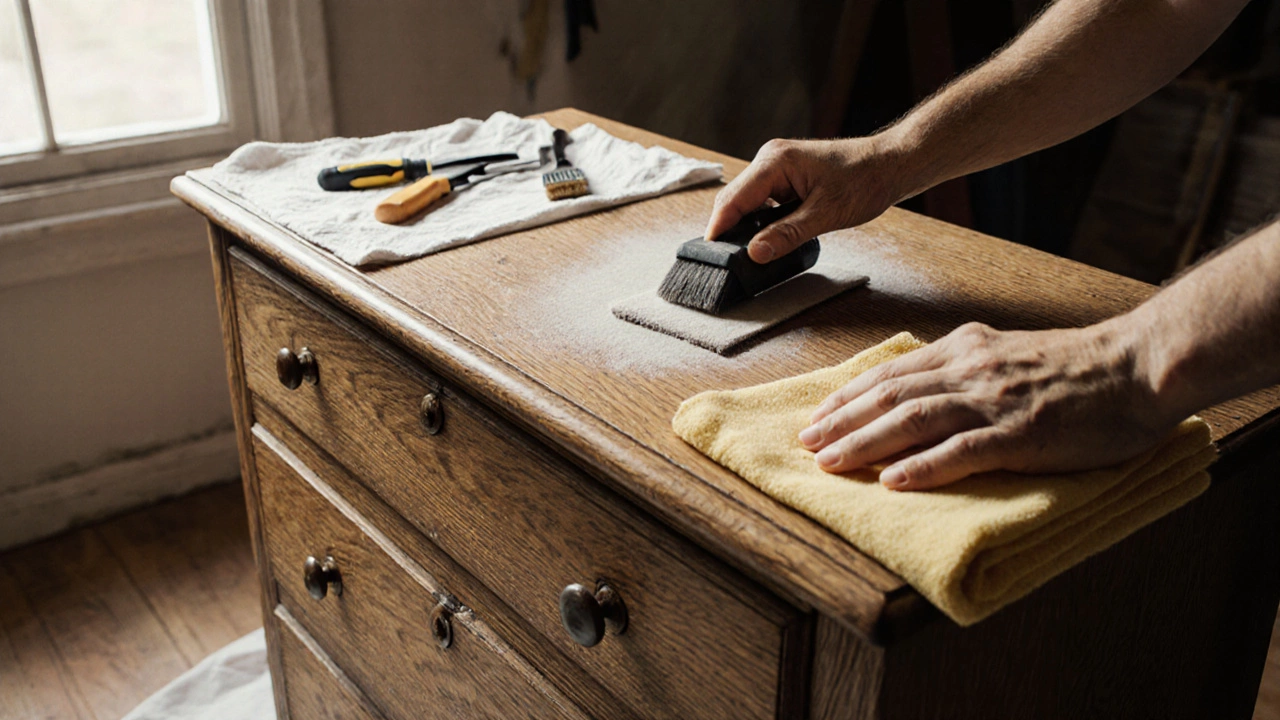When you own handcrafted wood furniture, solid, sustainably sourced pieces built to last decades. Also known as solid wood furnishings, these items carry weight—literally and emotionally. A proper wood furniture wrap, a protective covering designed to shield wood from moisture, dust, and scratches during storage or move isn’t just packing material—it’s insurance. Skip it, and you risk warping, mold, or finish damage, especially in the UK’s damp climate.
Many people think bubble wrap or plastic sheets are fine, but they trap moisture against the wood. That’s how mold creeps in, even in dry-looking storage units. Real wood furniture wrap, breathable, non-abrasive material like cotton muslin or specialized furniture moving paper lets wood breathe while blocking dust and minor impacts. It’s the same method used by museums and antique restorers. If you’ve read our posts on protecting furniture from mold in storage or keeping wood safe from damp, you know humidity is the silent killer. The right wrap doesn’t just cover—it manages airflow. And it’s not just for moving. If you’re storing a rustic dining table over winter or shipping a custom bookshelf, wrapping it properly makes the difference between a piece that looks new and one that needs sanding and refinishing.
What you wrap matters too. Solid oak? Great. Plywood with veneer? More delicate. The wrap needs to match the wood’s sensitivity. A handcrafted piece from Rustic Social isn’t mass-produced—it’s sanded by hand, finished with natural oils, and built for daily life. That means it reacts differently to heat, cold, and moisture than cheap flat-pack furniture. A good wrap doesn’t just protect the surface—it preserves the integrity of the wood underneath. You’ll find posts here that explain how to store chairs without crushing the joints, how to wrap legs to avoid scuffs, and why you should never use tape directly on wood finishes. These aren’t theoretical tips. They come from real mistakes people made, and the simple fixes that saved their furniture.
There’s no magic formula, but there are clear rules. Use breathable fabric. Avoid plastic. Don’t wrap too tight. Check every few weeks if it’s in storage. These steps are simple, but most people skip them until it’s too late. Below, you’ll find real advice from people who’ve done it right—and wrong. Whether you’re storing a coffee table, a wardrobe, or a recliner, the same principles apply. Protect the wood, and you protect the story behind it.

Learn how to successfully apply vinyl wrap over wood furniture for a modern, affordable refresh. Discover prep steps, material choices, and long-term care tips to avoid peeling and bubbles.
More